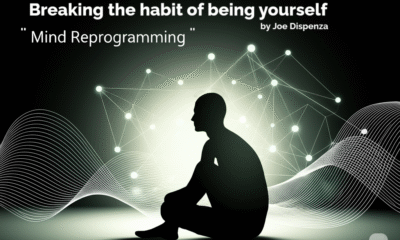1. Introduction to Never Split the Difference
Never Split the Difference (by chris voss) challenges the belief that meeting halfway is always optimal. Drawing on decades of real-world experience, this pragmatic guide transforms the way you approach discussions, from high-stakes business deals to everyday conversations. Instead of settling, this book shows how to guide interactions toward outcomes that satisfy both parties while preserving relationships. Therefore, if you seek clear, actionable steps that empower you to connect, persuade, and achieve lasting results, you are about to embark on a transformative journey.
Table of contents
- 1. Introduction to Never Split the Difference
- 2. Core Principles of Never Split the Difference
- 3. Chapter-by-Chapter Breakdown of Never Split the Difference
- 4. Review of Never Split the Difference: Strengths and Limitations
- 5. Who Should Read Never Split the Difference?
- 6. Practical Steps with Never Split the Difference
- 7. Common Misconceptions about Never Split the Difference
- 8. Conclusion: Embracing Never Split the Difference Techniques
1.1 What Is Never Split the Difference?
Never Split the Difference is authored by a former FBI hostage negotiator whose mission was to secure lives rather than pen agreements. Unlike many negotiation manuals that emphasize theory, this work immerses you in real scenarios—whether defusing life-threatening standoffs or brokering peace between warring factions—and distills tactics you can apply immediately. The title itself signals a shift from compromise toward creative collaboration: it argues that “splitting the difference” often leaves both sides disappointed. Instead, the author proposes proven tools rooted in emotional intelligence, calibrated language, and strategic empathy, all drawn from actual encounters where seconds mattered more than signatures.
1.2 Why the Title Matters
At first glance, the phrase Never Split the Difference sparks curiosity: can insisting on more than 50/50 lead to better results? The title encapsulates a core principle: by avoiding superficial bargains, negotiators uncover underlying motivations, fears, and ambitions. When you refuse to cut through the middle, you force deeper engagement, compelling everyone to explore alternatives that satisfy genuine needs. Consequently, the title serves as a mantra reminding readers that authentic agreements emerge when you depart from mere arithmetic divisions.
2. Core Principles of Never Split the Difference
2.1 Active Listening and Mirroring in Never Split the Difference
Active listening is the bedrock of Never Split the Difference. Rather than simply hearing words, you focus on capturing nuances—tone, pacing, and subtle shifts. Mirroring consists of repeating the last few words your counterpart says, prompting them to elaborate. For example, if someone states, “I can’t afford that price,” you respond, “You can’t afford that price?” This gentle echo encourages them to disclose reasons, emotions, or hidden priorities. By mimicking speech patterns and adjusting your body language to reflect theirs, you build subconscious rapport. As a result, they feel heard, lowering defenses and opening channels for collaboration.
2.2 Labeling Emotions in Never Split the Difference
Labeling involves naming the emotion you perceive: “It seems you’re frustrated by this timeline,” or “It sounds like you’re worried about risks.” By doing so, you validate their feelings and demonstrate understanding. This technique defuses hostility because people often become defensive when they sense their emotions are ignored. Instead, labeling acknowledges their humanity, which can transform a tense exchange into a cooperative dialogue. For instance, in a project discussion, if a team member snaps, “This plan won’t work,” you might say, “It sounds like you’re concerned this plan might fall short of expectations.” That simple statement invites them to share details rather than resist.
2.3 Tactical Empathy in Never Split the Difference
Tactical empathy goes beyond mere sympathy; it requires you to understand emotions from the other side’s perspective without agreeing or conceding. You consciously consider their fears, desires, and pressures, allowing you to tailor your words to their needs. For example, a vendor might believe they must protect profit margins; by acknowledging their position—“I understand you need to maintain margins to keep your business stable”—you reduce their resistance to new proposals. Tactical empathy is not manipulation; it is strategic kindness that aligns interests. When people feel understood, they become more open to exploring creative solutions, rather than digging in their heels.
3. Chapter-by-Chapter Breakdown of Never Split the Difference
3.1 Chapter 1: The New Rules of Negotiation
Chapter 1 introduces the shift from classical negotiation—rooted in logic and compromise—to a flexible, psychology-based approach. The author recounts how his early business training taught him the concept of “splitting the difference,” only for him to realize that this method often produced suboptimal outcomes. Instead, he experimented with techniques borrowed from crisis situations. By sharing vivid anecdotes—such as negotiating with kidnappers over the phone—he demonstrates why understanding human emotion trumps spreadsheets. The chapter ends with a promise: readers will learn to turn adversaries into partners once they master these new rules.
3.2 Chapter 2: Becoming the Mirror
Building on the introduction, Chapter 2 delves into mirroring. Through concise exercises, you learn to repeat key phrases to encourage your counterpart to reveal more. You practice calibrating your tone—slowing down to convey thoughtfulness or matching their urgency depending on context. A practical task: during daily conversations, take note when someone hesitates or pauses; mirror their last few words and observe how they expand on their thoughts. These micro-practices prepare you for higher-stakes negotiations.
3.3 Chapter 3: Don’t Feel Their Pain, Label It
Chapter 3 emphasizes labeling emotions over sharing your own feelings. The author warns that prematurely sharing your frustrations can stall progress. Instead, he invites readers to adopt an observer’s mindset: identify and articulate the other party’s emotional state. A real-life example recounts a business deal jeopardized by mistrust; by labeling the client’s anxiety—“It seems you’re worried about hidden fees”—the negotiator prompted them to clarify unknown clauses. Consequently, both parties redesigned the contract, creating transparency and trust.
3.4 Chapter 4: Beware Yes—Master No
Many assume a “yes” is the ultimate goal. However, the author explains that forced “yes” answers are often hollow. Instead, he encourages readers to seek “no,” which gives others a sense of control. A person who says “no” feels secure, as admitting refusal allows them to reconsider options. For instance, instead of asking, “Does this price work for you?” you ask, “Is this too high?” They respond “no,” acknowledging they do not reject the price, which positions the conversation forward. This shift helps you avoid deceptive agreements where “yes” masks reluctance.
3.5 Chapter 5: Trigger the Two Words That Immediately Transform Any Negotiation
Chapter 5 reveals “That’s right” as the magic phrase. When you summarize someone’s position authentically, they respond “That’s right,” indicating they feel fully understood. By contrast, a “you’re right” from your side might signal insincerity. Achieving a sincere “That’s right” requires thorough preparation: you gather facts, ask probing questions, and reflect back the essence of their worldview. Once you grasp their priorities—be it security, respect, or financial stability—your summary resonates, creating alignment. A case study describes a CEO who defused board resistance by summarizing concerns so accurately that directors nodded, enabling pivotal strategic shifts.
3.6 Chapter 6: Bend Their Reality
This chapter explores setting anchors—high or low reference points—to frame discussions. Instead of making the first offer, which might lock you in a suboptimal position, you ask calibrated questions like “How am I supposed to do that?” This technique forces the other party to re-examine their assumptions and propose a more reasonable figure. By guiding them to suggest numbers, you gain insight into their limits. Moreover, you learn to prepare a deadline, which creates a sense of urgency, but you must remain ambiguous about your walk-away point to maintain flexibility.
3.7 Chapter 7: Create the Illusion of Control
Here, readers learn to employ calibrated questions—starting with “what” or “how”—to push responsibility onto others. For example, asking, “How can we find a solution that works for both of us?” compels the counterpart to think collaboratively, rather than defensively. These questions often begin discussions, allowing you to gather information without revealing your own priorities. The chapter includes exercises: before any negotiation, list five “how” or “what” questions you might ask to uncover hidden constraints or leverage points.
3.8 Chapter 8: Guarantee Execution
Even after reaching an agreement, ensuring compliance can be challenging. Chapter 8 introduces the “7-38-55 Rule”: 7% of communication is words, 38% is tone, and 55% is body language (as per Professor Albert Mehrabian’s research). By consistently matching your voice and gestures to your words, you reinforce trust. For instance, maintain calm, steady tones when clarifying terms, and use open postures to show sincerity. Additionally, the author suggests creating “implementation deadlines” rather than open-ended commitments. By setting clear timelines—“Let’s both finalize this by Friday at 5 PM”—you reduce ambiguity and foster accountability.
3.9 Chapter 9: Bargain Hard
Chapter 9 returns to leverage. It dissects anchoring, bracketing, and the “Ackerman Model”—a five-step bargaining process involving specific percentage increments toward your target price. You start with 65% of your target, then adjust to 85%, 95%, and finally 100%, each time using calibrated questions to maintain the illusion that the other side controls the progression. This incremental approach prevents abrupt rejections and encourages small concessions that build momentum toward your goal. The author warns against theatrics—such as slamming the table—which often backfire. Instead, he advocates for calm persistence.
3.10 Chapter 10: Find the Black Swan
Black Swans are hidden variables—unexpected facts that, once revealed, can revolutionize outcomes. They may be personal concerns, undisclosed deadlines, or covert pressures. The author recounts how uncovering a family illness transformed a routine corporate negotiation into a compassionate, expedited agreement. To find Black Swans, you ask open-ended questions, observe nonverbal cues, and test hypotheses. When you detect subtle shifts—like a sudden glance at a phone—you probe gently: “Is there something we haven’t discussed yet?” Such inquiries often unearth game-changing information.
4. Review of Never Split the Difference: Strengths and Limitations
4.1 Strengths of Never Split the Difference
- Practical, Actionable Techniques: Unlike abstract negotiation theories, this book offers step-by-step methods readers can implement immediately. Each chapter ends with a concise summary and practice exercise, reinforcing learning.
- Real-Life Stories: Drawing from high-stakes scenarios—from hostage crises to business boardrooms—enhances credibility and engages the reader. These stories illustrate how principles work under pressure, which traditional textbooks rarely capture.
- Focus on Emotional Intelligence: By prioritizing feelings over facts, the author aligns with modern research on decision-making—for instance, studies from Harvard Business Review highlight that emotional rapport often predicts deal success more than logical argumentation.
- Versatility: While rooted in hostage negotiation, the tactics apply to salary discussions, vendor contracts, conflict resolution at home—any situation requiring influence.
4.2 Limitations of Never Split the Difference
- Cultural Sensitivity: Some examples derive from a Western law enforcement context; readers in different cultures may need to adapt language or protocols accordingly. For instance, labeling emotions directly could feel intrusive in reserved societies.
- Repetition: Several core principles overlap across chapters. Readers already familiar with active listening or empathy might find certain sections redundant.
- Intensity of Scenarios: While gripping, the emphasis on life-and-death negotiations can feel dramatic for readers seeking everyday tips. A calmer case study—such as negotiating a car purchase—might resonate more with general audiences.
- Implementation Complexity: Some techniques, like calibrating tone under stress, require diligent practice. Without ongoing role-play or feedback, readers may struggle to apply them flawlessly in crucial moments.
5. Who Should Read Never Split the Difference?
- Business Professionals Seeking an Edge: If you negotiate contracts, close sales, or manage vendor relationships, the tactics in Never Split the Difference can elevate your outcomes. For example, catching subtle shifts when discussing pricing can help secure better terms without damaging long-term partnerships.
- Leaders and Managers: Supervisors who mediate conflicts among team members or negotiate project resources will benefit from learning how to de-escalate tensions and foster collaboration. A manager who labels an employee’s frustration—“It seems you feel undervalued”—can open a path to constructive dialogue.
- Job Seekers and Freelancers: When discussing salary or project fees, knowing to aim for “no” rather than “yes” can put you in a stronger position. Rather than asking, “Is this rate acceptable?” asking, “Is this rate too high?” encourages employers to consider fairness rather than reject you outright.
- Anyone Facing Personal Conflicts: From family negotiations—like deciding on holiday plans—to resolving misunderstandings with friends, tactical empathy and calibrated questions foster mutual respect. Instead of arguing over opinions, you guide the other person to articulate their true concerns.
- Students of Communication: Individuals studying psychology, law, or conflict resolution will find firsthand accounts that supplement academic theories. The engaging writing style makes complex ideas accessible, reinforcing research on persuasion and behavioral science.
6. Practical Steps with Never Split the Difference
6.1 Preparing for Negotiation with Never Split the Difference
- Set Clear Objectives
- Identify your ideal outcome. For example, a freelancer may set a target project fee of $1,500 while knowing the walk-away minimum is $1,200.
- Research the other party’s needs. If negotiating with a supplier, learn their typical pricing range, delivery constraints, and industry pressures.
- Develop Your Emotional Roadmap
- Anticipate potential objections. Suppose a client might claim budget cuts; prepare labels: “It seems budget constraints make this challenging.”
- Rehearse mirroring and labeling phrases. Record yourself practicing tone and pacing to ensure authenticity.
- Draft Calibrated Questions
- Write at least three “how” or “what” inquiries. For instance: “How can we ensure this project meets both quality and timeline requirements?”
- Avoid “why” questions, which often sound accusatory. Instead, use “how” to distribute problem-solving responsibility.
- Plan for Black Swans
- Brainstorm hidden factors. Could the other side be under executive pressure to save costs quickly? Ask yourself: “What is incoming evidence that might reveal a Black Swan?”
- Design casual, non-threatening queries to uncover surprises: “Has anything changed recently that might affect our timeline?”
- Set Deadlines and Anchors
- Establish a clear but ambiguous deadline: “I need to finalize decisions by next Wednesday,” without revealing flexibility.
- Use probing statements like, “I’m trying to understand your constraints fully—how do you see this moving forward?”
6.2 Implementing Techniques in Real Life
- Start with Small Wins
Begin by practicing techniques in low-stakes contexts: negotiating responsibilities with a colleague or buying groceries at a local market. Notice how mirroring prompts deeper insights, and labeling reduces tension. - Observe Reactions Closely
Watch for micro-expressions—brief smiles, frowns, or pauses—that signal emotional shifts. When someone’s face tightens, it might be time to label: “It seems something here concerns you.” - Balance Empathy with Assertiveness
While expressing understanding is crucial, maintain your own priorities. For instance, after labeling a vendor’s stress about deadlines, reiterate your need for timely delivery: “I get that you’re under pressure; let’s explore how we can meet my timeframe without overburdening your team.” - Leverage “That’s Right” Summaries
Before pitching your own proposal, summarize their position fully. If they nod and say “That’s right,” you have earned their trust. Only then reveal your terms. - Use Anchors Judiciously
Rather than blurting out figures, ask calibrated questions: “How can we arrive at a price that reflects both our budgets?” This nudges them to suggest reasonable ranges. - Practice Active Patience
If they resist, avoid pushing too hard. Silence can be a powerful tool: after asking a calibrated question, remain quiet. The discomfort often compels them to fill the gap with concessions or additional information.
7. Common Misconceptions about Never Split the Difference
- Misconception: It’s Only for Hostage Situations
- Reality: While the author’s background provides dramatic examples, the underlying principles apply to everyday interactions: from salary discussions to family disputes. A survey by the Program on Negotiation at Harvard Law School (2018) found that emotional intelligence in business negotiations increased deal success by 35%.
- Misconception: It Encourages Manipulation
- Reality: Tactical empathy and calibrated questions are tools for understanding, not deceit. Ethical negotiators use them to reveal true interests, ensuring mutually beneficial outcomes. As long as you avoid deception—such as feigning vulnerability—the methods build trust rather than erode it.
- Misconception: It Demands Aggression
- Reality: The book warns against theatrics like shouting or bullying. It champions calm, measured tactics. For example, a real estate agent using mirroring remains composed, prompting the buyer to explain budget concerns without feeling attacked.
- Misconception: It Guarantees Instant Success
- Reality: Mastery requires consistent practice. A single reading won’t convert you into an expert negotiator. Instead, integrating these techniques into daily conversations, as recommended by the author’s workbook exercises, gradually builds skill.
- Misconception: It’s Too Complex for Beginners
- Reality: Although initially overwhelming, the book breaks down each tactic into digestible steps. Even someone with no prior negotiation training can apply a simple labeling or mirroring technique today and observe immediate improvements.
8. Conclusion: Embracing Never Split the Difference Techniques
By refusing to “meet halfway” in a superficial sense, Never Split the Difference empowers you to transform interactions into opportunities for creative problem-solving. Its blend of tactical empathy, calibrated language, and real-life anecdotes creates a versatile toolkit for anyone seeking to improve communication. Whether you negotiate business deals, mediate community disagreements, or simply strive for more constructive dialogues at home, the principles you learn here equip you with the confidence to steer conversations toward genuine understanding and satisfactory resolutions.
Consider committing to one small practice this week: next time you face a disagreement, pause and mirror a key phrase. Notice how that simple act encourages deeper sharing. Over time, as you layer in labeling and calibrated questions, you will see not only better outcomes but also stronger relationships built on trust. After all, negotiation is not a zero-sum game; it is a path to discovering shared gains. Embrace these strategies, and you’ll find that you no longer feel trapped by compromises. Instead, you’ll cultivate solutions that both preserve dignity and satisfy fundamental needs—truly never splitting the difference.
Table: Key Techniques from Never Split the Difference
| Technique | Description | Practical Example |
|---|---|---|
| Mirroring | Repeat the last few words of your counterpart’s statement to encourage elaboration. | Counterpart: “I’m worried about shipping delays.” You: “Shipping delays?” |
| Labeling | Name the emotion you perceive to validate feelings and reduce defensiveness. | “It sounds like you’re feeling overwhelmed by the project timeline.” |
| Tactical Empathy | Actively understand their perspective without agreeing, to align interests and build trust. | “I understand you need to protect your profit margins; let’s explore how to maintain both.” |
| Calibrated Questions | Ask open-ended “what” or “how” questions that force them to solve a problem you frame. | “How can we find a solution that meets your budget and our quality standards?” |
| Triggering “That’s Right” | Summarize their position accurately so they respond with “That’s right,” signaling genuine agreement. | “You feel this proposal risks your brand reputation because it lacks specific safeguards.” |
| Anchoring & Deadlines | Set reference points and deadlines strategically to frame decisions without revealing your limits. | “I need a commitment by Friday; how can we ensure both sides feel comfortable by then?” |
| Finding Black Swans | Identify hidden factors that, once revealed, can dramatically shift leverage by asking probing, empathetic questions. | “Is there any other consideration we haven’t discussed that might affect your decision today?” |
references
Warning: The provided links lead only to the specified content. Other areas of those sites may contain material that conflicts with some beliefs or ethics. Please view only the intended page.
- Harvard Program on Negotiation (2024) – Study linking emotion‑reading to better deals en.wikipedia.org+14teamgate.com+14amazon.com+14
- The Decision Lab (2024) – Overview of tactical empathy in negotiation en.wikipedia.org+4pon.harvard.edu+4pon.harvard.edu+4 thedecisionlab.com
- Reddit /r/BettermentBookClub (2022) – Community summary of Never Split the Difference teamgate.com+8reddit.com+8thedecisionlab.com+8
- Attackonjack Substack (2022) – Review detailing mirroring and labeling techniques reddit.com attackonjack.substack.com
- JD Meier (n.d.) – Tactical empathy as negotiation foundation attackonjack.substack.com pon.harvard.edu+15jdmeier.com+15jumahanje.medium.com+15
- Teamgate Blog (2024) – Practical applications and critique of Never Split the Difference legal.io+10teamgate.com+10jdmeier.com+10
- Harvard Business School Online (2023) – Role of emotions in negotiations teamgate.com online.hbs.edu+1direct.mit.edu+1
- HBR (2013) – Importance of negotiation with emotion teamgate.com+3online.hbs.edu+3online.hbs.edu+3 hbr.org

















